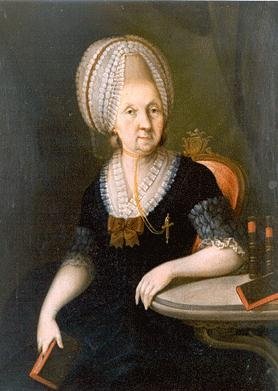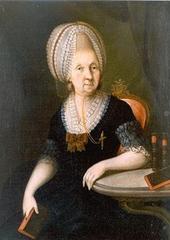
Säckingen Abbey: Your Complete Guide to Visiting Hours, Tickets, and Historic Sites in Bad Säckingen
Date: 15/06/2025
Introduction
Nestled in the charming town of Bad Säckingen, Germany, Säckingen Abbey (Fridolinsmünster) stands as a monumental testament to the region’s rich religious, cultural, and architectural heritage. Founded by the Irish missionary Fridolin in the early Middle Ages, the abbey has shaped the spiritual and civic life of the Upper Rhine for over a millennium. Today, visitors are drawn to its stunning Baroque architecture, storied past, and vibrant cultural events. This guide provides everything you need—from historical context and architectural highlights to visiting hours, ticket information, and practical travel tips—for an enriching experience at one of the Black Forest’s most treasured landmarks. (Wikipedia; SpottingHistory; Swiss Spectator)
Table of Contents
- Historical Overview
- Architectural Features & Evolution
- Cultural Significance
- Visitor Information: Hours, Tickets, and Tours
- Practical Tips and Amenities
- Frequently Asked Questions (FAQ)
- Conclusion
- References
Historical Overview
Foundation and Early Development
Säckingen Abbey traces its legendary origins to the 6th or 7th century, when St. Fridolin, an Irish monk, founded a monastic community on an island in the Rhine. Tradition holds that he was guided by a vision of St. Hilarius and received support from Frankish King Clovis. The abbey quickly became a center of Christianization for the Alemanni and housed both monks and nuns in its earliest centuries. (Wikipedia; SpottingHistory)
Medieval Expansion and Political Influence
By the 9th century, Säckingen Abbey had achieved significant regional power. Emperor Charles the Fat’s grant of the abbey as a royal estate to his wife expanded its influence, with extensive lands in the Rhine and Frick valleys, and into what is now Switzerland. In 1173, Emperor Frederick Barbarossa granted the abbey’s bailiwick to the Habsburgs, embedding it in the political landscape of the Holy Roman Empire. (Swiss Spectator)
Zenith and Social Role
The 10th–12th centuries marked the abbey’s height, with the abbess elevated to Reichsfürst (Imperial Prince) status in 1307. The abbey’s reach extended as far as the Fricktal and Glarus, shaping local economies and spiritual life. St. Fridolin became the patron saint of Glarus, a bond still evident in Swiss heraldry. (Swiss Spectator)
Architectural Evolution and Decline
Devastated by fire in 1272, Säckingen Abbey was rebuilt, with the current Fridolinsmünster constructed between 1343 and 1360. Its Baroque transformation began in 1698, giving the abbey its present grandeur. As the Middle Ages waned, the abbey’s influence declined, culminating in secularization in 1806 under Napoleonic reforms. Its buildings have since served civic purposes, with parts now used for community services. (Mythische Orte; Bad Säckingen Official)
Enduring Legacy
Despite secularization, Säckingen Abbey remains central to Bad Säckingen’s identity. The annual feast of St. Fridolin, celebrated with processions and music, draws visitors from across the region. The abbey continues to play an active role in religious, cultural, and community life. (Wikipedia)
Architectural Features & Evolution
Romanesque Roots to Baroque Splendor
The abbey’s earliest structures reflected Romanesque architecture: solid pillars and rounded arches. After reconstruction, the Fridolinsmünster acquired Baroque features in the 17th and 18th centuries, including twin onion-domed towers, ornate stucco, and luminous interiors designed to awe and inspire. (germany-guide.info; Black Forest Highlights)
Interior Highlights
- Fridolin Shrine: Crafted in 1764 by Gottlieb Emmanuel Oernster, this silver shrine houses the relics of St. Fridolin and is a masterpiece of Baroque silversmithing.
- High Altar & Chapels: Gilded altars, frescoed ceilings, and unique side chapels dedicated to various saints.
- Organ & Acoustics: The Baroque organ is renowned for its sound, supporting a vibrant tradition of concerts.
- Stained Glass: Windows depict the life and miracles of St. Fridolin, infusing the nave with vibrant color and narrative.
The Abbey Complex
The site includes cloisters, tranquil gardens, and auxiliary buildings. Its location beside the Rhine, at the center of Bad Säckingen’s old town, contributes to its unique atmosphere and makes it a focal point for both pilgrims and tourists. (en.wikivoyage.org)
Cultural Significance
Spiritual & Pilgrimage Center
Säckingen Abbey’s role as the resting place of St. Fridolin makes it a major pilgrimage destination, especially during his annual feast in March. The abbey is also an active parish church, blending living tradition with historical reverence. (germany-guide.info)
Artistic and Musical Heritage
Concerts, especially organ recitals, are a highlight of the abbey’s cultural calendar. Artistic treasures—paintings, sculptures, and liturgical silver—document centuries of faith and artistry.
Integration with the Town
Münsterplatz, the square fronting the abbey, serves as a community gathering space for markets and festivals, reflecting the abbey’s integration into civic life. The nearby historic wooden bridge over the Rhine and the “Trumpeter von Säckingen” statue further enrich the visitor experience. (en.wikivoyage.org)
Visitor Information: Hours, Tickets, and Tours
Visiting Hours
- General Opening: Daily, 9:00 AM to 6:00 PM (extended in summer; closed for certain religious services or events)
- Treasure Chamber: Access via guided tours or special openings—check current schedules in advance.
Tickets & Admission
- Abbey Church: Free for individual visitors; donations welcome.
- Guided Tours: Typically €5–€8 per person; group and student discounts available.
- Concerts & Events: Ticket prices vary, especially for organ recitals (€10–€15 typical range).
- Treasure Chamber: May require a ticket or tour reservation.
Book tickets at the visitor center, online, or via the Tourismus- und Kulturamt.
Guided Tours
Tours in German and English (other languages on request) provide deep insights into the abbey’s history, art, and legends. Private and themed tours are available for groups, families, and school visits. Advance booking is recommended, particularly during high season.
Accessibility
- Wheelchair Access: Ramps at main entrances. Most interior spaces are accessible, though some historic sections (such as the treasure chamber) may be limited.
- Restrooms and Facilities: Accessible facilities are available nearby; the Münsterplatz and surrounding streets are level and paved.
(Tourist-Information Bad Säckingen)
Practical Tips and Amenities
Getting There
- Address: Münsterplatz 8, 79713 Bad Säckingen, Germany
- By Train: 10-minute walk from Bad Säckingen railway station (direct links from Basel, Zürich, Freiburg).
- By Car: Ample parking nearby; check for applicable fees.
- By Bike: Secure bicycle parking; popular with Rhine and Black Forest cyclists.
Food and Shopping
Münsterplatz and nearby streets offer numerous dining options, from traditional cafés to international restaurants and local bakeries. Souvenirs, books, and religious items can be found at the abbey’s gift shop and nearby boutiques.
Events and Festivals
The abbey hosts regular concerts, liturgical celebrations, and the vibrant annual St. Fridolin’s feast. Check the city’s event calendar for details.
Visitor Etiquette
- Dress modestly (shoulders and knees covered). Remove hats inside the church.
- Remain quiet and respectful, especially during services or when others are praying.
- Photography is allowed (without flash or tripod), but professional shoots require permission.
Frequently Asked Questions (FAQ)
Q: What are the Säckingen Abbey visiting hours?
A: Generally daily, 9:00 AM–6:00 PM; check the Tourist-Information for seasonal variations.
Q: Is there an entry fee?
A: No, entry is free. Donations are appreciated. Some tours and events require tickets.
Q: Are guided tours available in English?
A: Yes, advance booking is recommended.
Q: Is the abbey wheelchair accessible?
A: Most areas are accessible; contact the visitor center for specific needs.
Q: Can I take photographs inside?
A: Yes, but avoid flash and tripods; be respectful during services.
Q: Where can I park?
A: Multiple parking lots are within walking distance of the abbey.
Q: Is Bad Säckingen family-friendly?
A: Yes, with children’s rallies, open plazas, and stroller-friendly paths.
Conclusion
Säckingen Abbey is much more than a historic monument—it is a living testament to the cultural, spiritual, and architectural evolution of Bad Säckingen and the Upper Rhine. From its legendary founding and Baroque splendor to its vibrant present-day role, the abbey welcomes visitors of all backgrounds. Plan your visit around the latest opening hours, consider a guided tour or special event, and take time to explore the picturesque old town and iconic wooden bridge nearby. Whether you are a pilgrim, history buff, or curious traveler, Säckingen Abbey promises a memorable and inspiring experience.
For more travel tips, downloadable audio guides, and up-to-date information, download the Audiala app and follow us on social media.
References
- Säckingen Abbey - Wikipedia
- Spotting History: Säckingen Abbey
- Swiss Spectator: Die Abtei Säckingen und Glarus
- Bad Säckingen Official Tourism
- Germany Guide: Bad Säckingen
- Black Forest Highlights: St. Fridolinsmünster
- Wikivoyage: Bad Säckingen
- Mythische Orte: Bad Säckingen
- Komoot Guide: Attractions Around Bad Säckingen

